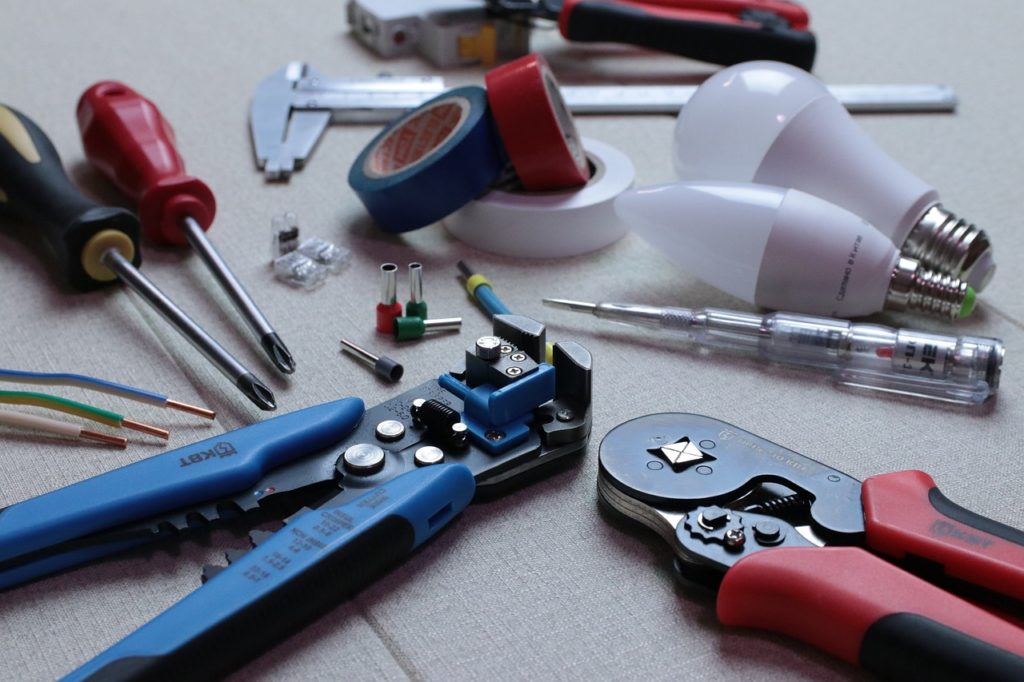The use of recessed lighting is becoming increasingly common in the construction of brand-new residential homes. It is installed so that it is flush with the ceiling, and it adds a touch of contemporary style to both the kitchen and the bathroom.
The recessed lighting, despite having an appealing visual look, is not a highly energy-efficient form of lighting. They call for bulbs with a higher wattage, and if the hole isn’t sealed correctly, it lets frigid air into the house.
Because of this factor, an increasing number of homeowners are opting to eliminate recessed lighting. However, you will need to deal with a gaping hole in the ceiling once the canister has been taken down from the ceiling.
You have the option of purchasing commercial blanks, which come in a variety of sizes and have a spring that keeps the blank flat with the ceiling, or you can design your own patch.
For this project, you will need the following items:
- Pencil
- Drywall saw
- Utility knife
- Rag
- 1 x 4 pine
- Saw
- Construction adhesive
- C-clamps
- Measuring tape
- Drywall
- 1 ¼ inch drywall screws
- Mesh drywall tape
- Drywall joint compound
- Drywall knife
- Medium or coarse sandpaper

Proceed in the following manner:
1. Draw a square around the hole with a pencil and make sure it’s centered on one of the adjacent studs.
2. Using the drywall saw, trace the contour that was drawn with the pencil. Cut off all of the square’s sides, except for the one that is on the stud.
3. Make the cut along that side using a utility knife. Dust and flakes of drywall can be removed from the perimeter of the hole by wiping it down with a damp rag.
4. Measure the height of the square hole and use the saw to cut the 1×4 6 inches longer than the square’s height.
5. Apply the construction adhesive to the top and bottom of the board in a 4-inch wide band, insert the board into the hole, and press it to the inside wall, on the side adjacent to the stud.
6. Apply C-clamps to the top and bottom of the board to hold it in place against the wall. Allow the adhesive to dry completely and remove the clamps.
7. Measure the square and cut a piece of drywall to fit. Use the screws to fasten the drywall piece over the hole, screwing two into the stud, at the top and bottom of the square and two into the 1×4, at the top and bottom.
8. Cut the mesh tape into strips that are 2 inches longer than the square’s height and apply them to the wall, overlapping one another.
9. Use the drywall knife to apply the joint compound to the mesh by spreading it all across the surface. Be careful not to use too much; the coating of the compound should be thick enough that the mesh can just about be seen through it. Round off the corners so that they meet the wall. Give the compound a chance to dry out completely overnight.
10. Sand the area in great detail to make it smooth and get rid of any rough edges.
11. Apply the second coat of drywall compound, spreading it an additional 4 inches on all sides, beyond the first application. Feather the edges so that they blend in with the surrounding wall.
12. After the compound has had ample time to dry completely, add a second coat. Sand again after this coat has had time to dry.
If you have any queries, please contact us. We are delighted to be of assistance to you!

